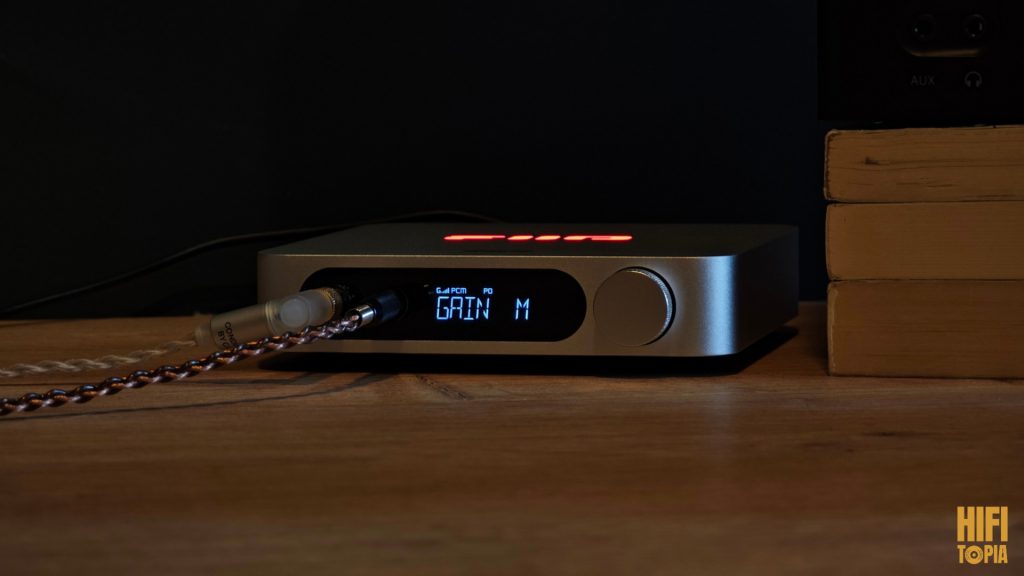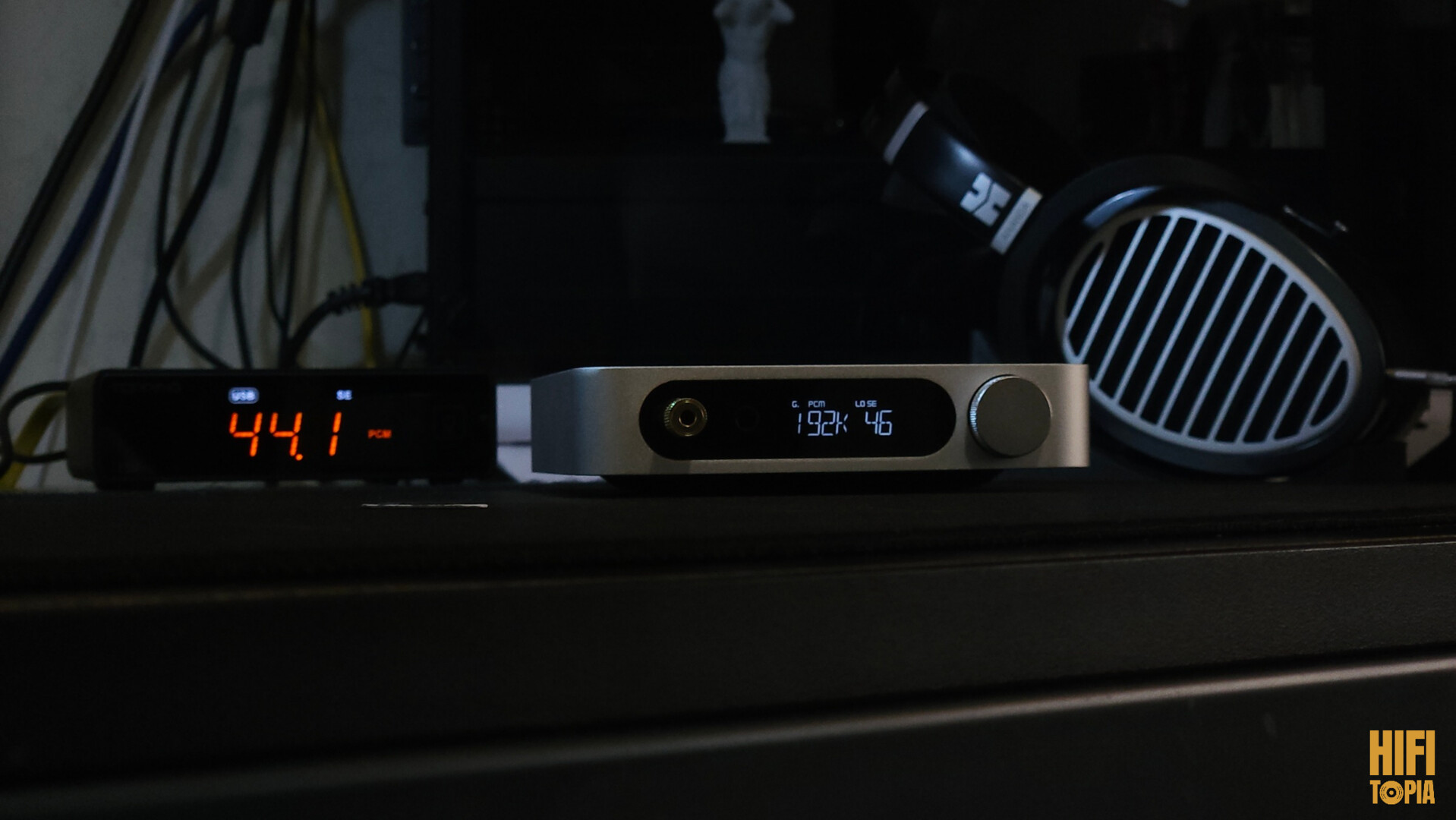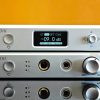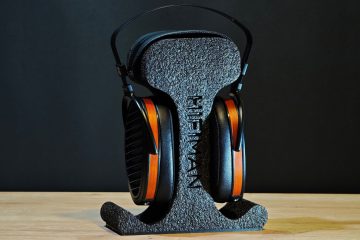Introduction
The Fiio K11 R2R is, in today’s literal terms, the most affordable R2R dac on the market. Despite its very affordable price, the K11 R2R blends the “analog R2R character” with good power and technique. With a max output power of 1300mW, slightly less than the previous version K11, it is still very powerful and offers a good desktop experience. But what’s not to like about it? Let’s take a closer look.
I bought the product myself with the purpose of writing an independent review and wrote this review after experiencing it in different scenarios. Enjoy your reading.

Build and Design
The K11 R2R comes with a 220v adapter, power cable, type-c to type-a usb cable and a 6.35mm to 3.5mm converter and is available in three different colors. Over the years, I’ve found the black color boring, but I skipped the red and went for the silver color. This silver color has a near-white appearance. By the way, I think the black color is prone to scratching.
The FIIO logo on the top is also an LED with adjustable functions. Its color and intensity can be adjusted. Rca and coax outputs come with a rubber cover on them. I love this, it shows that Fiio has done its job with care.
Externally, it is identical to the original K11 except for the R2R lettering. In general, I prefer this flat design to the K5’s design. It has a decent enough screen, but I don’t feel the same about the buttons. Yes, I know this is a trend since the Q1MII and inspired by Dieter Rams’ 10 Principles of Good Design. Yes, it’s cool to control everything with one button, but it’s very boring to hold it down for 5 seconds each time to turn the device off.

Sound
FiiO K11 R2R as Headphone Amp and Dac
In a headphone scenario, the K11 R2R is very versatile with three different gain modes and OS/NOS options. From an R2R point of view, it gives a very good performance for the price because it is already cheaper than other R2Rs. Not only does it offer the warm, analog sound you’re looking for, but it doesn’t have the expected technical losses compared to delta sigma dacs and offers good resolution and staging for the price.
What we need to examine in this section is what to say about over-ear and in-ear. There’s not much to say about on-ear, in fact, for the moment, the Fiio K11 R2R is the best buy at this price point for most on-ear headphones. But there is something you need to know if you are going to use this amp with iem. Although I didn’t observe it myself, I heard that there is some background noise with sensitive iems. I recommend using your sensitive iems with a dongle or dap. On the other hand, I didn’t detect any such problem when listening with Yanyin Moonlight Ultra and Dita Project-M.

Some Numbers (THD+N)
R2R dacs are more prone to THD than delta sigma dacs. For example, the K11 R2R has a THD+N of 0.025% at both outputs, while the original K11 has 0.00059%. I don’t think this is a situation that will harm your hearing, but I know that there are people who carefully follow these parameters and measurements. You can click here (and then you have to scroll down) to see the measurements of the K11 R2R.
Detailed Output Parameters Of The FiiO K11 R2R
Single-ended headphone output (6.35mm):
L+R≥660mW +660mW(16Ω,THD+N<1%)
L+R≥460mW +460mW(32Ω,THD+N<1%)
L+R≥50mW+50mW (300Ω,THD+N<1%)
Channel crosstalk: ≥72dB
Frequency response:
20Hz~50kHz: damping<1.3dB
20Hz~20KHz: damping<0.2dB
THD+N: About 0.025% (1kHz/0dB@32Ω)
SNR: ≥115dB (A-weighted)
Noise floor: <7.2uV (A-weighted)
Dynamic range: ≥107dB
Output impedance: <1Ω
Peak output voltage: 11Vp-p
Balanced headphone output (4.4mm):
L+R≥520mW+520mW (16Ω, THD+N<1%)
L+R≥1300mW+1300mW (32Ω, THD+N<1%)
L+R≥220mW+220mW (300Ω, THD+N<1%)
Channel crosstalk: ≥107dB
Frequency response:
20Hz~50kHz: damping<1.3dB
20Hz~20KHz: damping<0.2dB
THD+N: About 0.025% (1kHz/-11.6dB@32Ω)
SNR: ≥115dB (A-weighted)
Noise floor: <14.1uV (A-weighted)
Dynamic range: ≥107dB
Output impedance: <1.5Ω
Peak output voltage: 23Vp-p

Technics
When you hear R2R dacs referred to as warm or analog, many people have a preconceived notion that the technical performance will not be good. That’s actually not true, I don’t like to talk about R2R as if it’s not analytical enough, because R2R dacs don’t actually do the manipulations that a lot of dacs do to the sound. However, the K11 R2R offers a very good technique. It is good in terms of resolution, separation, imaging and detail retrieval. In terms of soundstage, layering and note weighting, it’s excellent. It doesn’t have the best reproduction of microdetails, but it gets a lot of nuances right to your ear. In fact, I can say that a well-made R2R dac system is a great fit on top of the analytical sound phenomenon that FiiO has not left for years.

Tonality
K11 R2R is tonally what you hear about R2R combined with the “FiiO sound”. It’s warm and analog-like but at the same time balanced to capture the best detail in the upper frequencies. Overall, it adds a slight U-shape color to the sound. However, this color does not damage the accuracy of the instrument. If you don’t have a taste for flat or purely analytical/digital sound, I’d say the K11 R2R is a very all-rounder choice for you in many musical genres.
Bass
The lower frequencies are a bit strong and have a warming effect on the sound, enhancing the emotion and feeling of the track. I can say this for both instruments and electronic music. It’s not basshead, but it can be made suitable for this with eq. (There is no eq in the device itself, I’m talking about software eq).
Mid
The mid frequencies are transparent and open but not the best in terms of texture. Still, at this price it’s great because it’s both analog-like and technically competent.
Treble
This is where I take my hat off to Fiio as I think this is the hard part for many amps or dacs. The treble is very natural and accurate and the amount of extension is very well controlled. Yes, there is a tiny bit of grain or lack of resolution compared to high end equipment. But at this point I would say that this treble is quite good, bearing in mind the price.

FiiO K11 R2R as Dac For The Speakers
Technically and tonally, you can take what I’ve said as valid. In this section I will only talk about my experiences with two different speakers.
The test was with the Edifier MR4 2.0 without using any other dac to observe a difference from zero to one hundred percent. When I connected the K11 R2R (in Line Out mode) to this active speaker with the Atlas Element Integra, I observed the following effects on the sound: Technical improvement, especially in resolution and layering (as expected). Tonally, it added a subtle lamp amp flavor to the sound. But beyond that, it also unexpectedly emphasized the vocals. The low frequencies sounded plumper, but not more in quantity.
FiiO K11 R2R ($169) vs Hiby FC6 ($269)
Before I make this comparison, let me say this. This comparison was made using only iems and only valid for iems. I know this comparison is not entirely fair, but I still wanted an R2R comparison.
Without complicating things, here are my observations from my tests with Yanyin Moonligth ultra: Hiby Fc6 is slightly better in resolution, staging, detail reproduction and layering, but by far better in imaging, instrument fidelity, texture, separation and timbre. Since both devices use R2R, they have a similar tone, although the K11 R2R is slightly brighter. When it comes to iem, the FC6 is clearly superior. However, there are two things to note here. The first is that the FC6 is about 100 dollars more expensive. The second is that the FC6 is not only built to drive iem, but the K11 R2R has more functionality as a desktop dac/amp. As a result, if you are only going to use iem, the FC6 makes much more sense, while for desktop use the K11 is quite advantageous for its price.
Putting all this aside and just looking at it in terms of iems, the K11 R2R sounds like a more economical model of the FC6. What FC6 does, it does less and a little bit differently. Still, compared to other devices, the K11 R2R is quite competitive.
Last Words
The Fiio K11 R2R is a very good device for the price, features and sound. It’s very competitive in all desktop use cases. R2R dacs are something we are not used to seeing at this price point. I hope this situation will normalize in the future.











